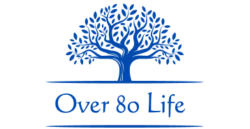How to Open a Index Universal Life Insurance Policy

Embarking on the path to secure an Index Universal Life Insurance (IUL) policy can feel like navigating a labyrinth. With its unique blend of flexible premiums, potential for cash value growth linked to a market index, and a death benefit for your loved ones, an IUL policy is more than a financial product—it’s a dynamic tool for long-term financial security. Let’s walk through the steps together, demystifying the process with insights and practical advice to ensure you make a well-informed decision tailored to your needs.
An Introduction to Index Universal Life Insurance
At its core, an IUL policy is a type of permanent life insurance that offers the dual benefits of a death benefit and a cash value account, the growth of which is tied to the performance of a market index, such as the S&P 500. Unlike direct investments in the stock market, an IUL policy provides a safety net through a guaranteed minimum interest rate, ensuring your cash value doesn’t plummet with market dips. Furthermore, it offers the flexibility to adjust premium payments and the death benefit amount, alongside potential tax advantages, making it an attractive component of a well-rounded financial plan.
Before diving into the intricacies of Index Universal Life Insurance, it’s crucial to understand all aspects of life insurance policies, including the potential for policies to be taken out in your name without consent. For more information on this topic, visit Can Someone Insure Me Without My Knowledge?
Step 1: Aligning the Policy with Your Financial Objectives
The first step in opening an IUL policy is a deep dive into your personal and financial goals. This self-assessment involves considering:
- Long-term financial objectives
- Retirement planning needs
- Desired level of financial security for your beneficiaries
- Estate planning considerations
Engaging with a financial advisor or an estate planning attorney can provide invaluable perspectives, ensuring your policy aligns with your broader financial strategy.
After identifying your financial goals, the next step involves the underwriting process, where insurers evaluate your health and risk levels. Understanding medical record checks by insurance companies can prepare you for what to expect and streamline the application process.
Step 2: Choosing the Right Insurance Company
With your needs in hand, it’s time to select an insurance company. Look for insurers with a staunch reputation for financial stability, customer satisfaction, and expertise in IUL policies. Resources provided by insurance regulators and the insurance marketplace are excellent starting points for research.
Step 3: Partnering with a Professional
Though you can start the process online, the guidance of a seasoned insurance agent or financial planner is invaluable. They can navigate you through the options, ensuring the chosen policy matches your financial landscape. These professionals assist not only with the underwriting process but also illuminate the complex aspects of IUL policies, such as:
| Feature | Description |
|---|---|
| Flexible Premium Payments | Adjust your premium payments as your financial situation changes. |
| Cash Value Account | Growth potential linked to a market index, with safeguards against market volatility. |
| Death Benefit | A guaranteed sum payable to your beneficiaries upon your demise. |
| Riders and Endorsements | Optional add-ons to customize your policy for additional coverage or benefits. |
A crucial tool they’ll provide is a policy illustration, predicting your policy’s performance over time.
Step 4: Navigating the Application and Underwriting Process
The application form for an IUL policy is your next hurdle, requiring detailed personal, financial, and health-related information. Expect to sign a HIPAA Authorization, allowing the insurer to retrieve your medical records, and potentially undergo a medical exam—a pillar of the underwriting process which assesses your health to determine your policy’s cost. This stage is intricate and may include:
- Verification of insurable interest
- Credit report checks
- Review of your medical history
The underwriting process is a blend of art and science, culminating in a policy tailored to your profile.
A Closer Look at Policy Illustrations
Once the insurer presents a policy illustration, it’s crucial to review it meticulously. It offers a snapshot of prospective outcomes under varying conditions, such as changes in premium payments, cash value growth, and the impact of withdrawals. Here’s why understanding each segment is crucial:
- Accumulation Phase: This phase highlights how your cash value is expected to grow over time.
- Distribution Phase: This section predicts future withdrawals or loans and their influence on your policy’s longevity and cash value.
- Surrender Charges and Policy Loans: Understanding these aspects can help you strategize policy borrowing and the potential impacts of surrendering your policy early.
- Tax Implications: Your policy’s tax ramifications, especially concerning loans and withdrawals, are outlines here.
This illustration isn’t a guarantee but a roadmap, helping you visualize potential futures of your policy.
Finalizing Your Policy
After thorough review and any necessary adjustments, the next step is signing the policy documents. This milestone represents your commitment but comes with a safety net—the free-look period. This window allows you to reconsider and potentially cancel the policy without financial penalties, ensuring you’re entirely comfortable with your decision.
Navigating Policy Management and Review
An IUL policy is not a ‘set-and-forget’ product. Active management and periodic reviews with your advisor are crucial. Life changes, such as a new child, marriage, or career shift, necessitate policy adjustments to keep it aligned with your evolving needs. Key considerations include:
- Annual reviews of the policy’s performance
- Adjusting premiums and death benefits as necessary
- Considering additional riders for changing life circumstances
Additionally, staying informed on how to leverage policy loans and partial withdrawals without compromising the policy’s integrity is paramount. Awareness and proactive management ensure your IUL policy remains a robust pillar of your financial strategy.
Conclusion
Opening an Index Universal Life Insurance policy marks a decisive step towards securing your financial future and safeguarding your loved ones. While the process might seem complex, arming yourself with knowledge and the right support team makes it navigable and rewarding. We’ve taken you through the critical steps, but remember, the journey doesn’t end with signing your policy—it’s an ongoing commitment to adapt and optimize as your life evolves. Your IUL policy is a living, breathing tool in your financial arsenal, designed to grow and flex with you through life’s twists and turns.
Disclaimer
This article is intended for informational purposes only and does not constitute financial, legal, or tax advice. The specifics of your situation should be discussed with a professional in the respective field.
Frequently Asked Questions
Understanding the intricacies of life insurance requires navigating through a myriad of terms and entities, each playing a crucial role in the protection and financial planning of the policyholder. At the heart of this process is the insurance application form, a document that initiates the underwriting process. This procedure, often necessitating a medical exam, assesses the risk associated with insuring the individual. The underwriting outcome influences the cost of insurance (COI), which is a fundamental component of the policy’s expenses.
Insurance agents serve as intermediaries between the policyholder and the insurance company, offering guidance on the selection of appropriate coverage. They often utilize illustration software to provide policy illustrations, detailed projections of how the policy’s cash value account and death benefit might grow over time. These illustrations are based on various factors, including premium payments, the interest crediting rate, and, in the case of indexed policies, the performance of a market index.
Premium payments are the lifeline of a life insurance policy, maintaining its active status and ensuring the death benefit remains in force. Policyholders have the option for flexible premium payments in certain types of policies, allowing them to adjust their payment amounts as their financial situation changes. However, failure to meet the minimum required premium can lead to a policy lapse, jeopardizing the financial security it was meant to provide.
To mitigate the risk of a policy lapse, some policies offer non-forfeiture options, which provide alternatives such as reduced paid-up insurance or an extended term coverage if the policyholder cannot continue making premium payments. Additionally, policies may include riders, which are amendments to the policy providing additional benefits or coverage options. For instance, an overloan protection rider can prevent the policy from lapsing due to excessive policy loans.
Policy loans and partial withdrawals are features that allow the policyholder to access the cash value account of their policy, subject to certain terms and conditions. While these options provide financial flexibility, they can also reduce the death benefit and cash value if not managed carefully. It’s also important to note that any outstanding loans accrue interest, which can compound the amount owed.
The accumulation phase of a life insurance policy refers to the period when the cash value is building, often benefiting from tax advantages such as tax-deferred growth. The distribution phase, on the other hand, involves accessing the policy’s accumulated cash value, either through loans, withdrawals, or as a death benefit to the beneficiary. Understanding the tax implications of these actions is crucial, and consulting with a financial planner or estate planning attorney is advisable to maximize the policy’s benefits while minimizing tax liabilities.
Insurance regulators oversee the insurance marketplace, ensuring companies and agents comply with laws designed to protect consumers. They also approve policy forms, including exclusion clauses that detail specific situations or conditions not covered by the policy. A free-look period is mandated in many jurisdictions, allowing policyholders a specified timeframe to review their policy and cancel without penalty if they choose not to proceed.
Insurance products like life insurance trusts offer advanced estate planning opportunities, enabling policyholders to manage how their death benefit is distributed to beneficiaries while potentially avoiding estate taxes. However, establishing a trust requires an insurable interest requirement to be met, ensuring that the trust has a legitimate need for insurance on the life of the insured.
In conclusion, navigating the complexities of life insurance involves understanding a broad spectrum of entities and concepts. From the initial application and underwriting process to managing the policy through its accumulation and distribution phases, each element plays a critical role in ensuring the policy serves its intended purpose. Consulting with professionals such as financial advisors and estate planning attorneys can provide valuable insights, helping policyholders and beneficiaries maximize the benefits while adhering to regulatory requirements and minimizing tax liabilities.



